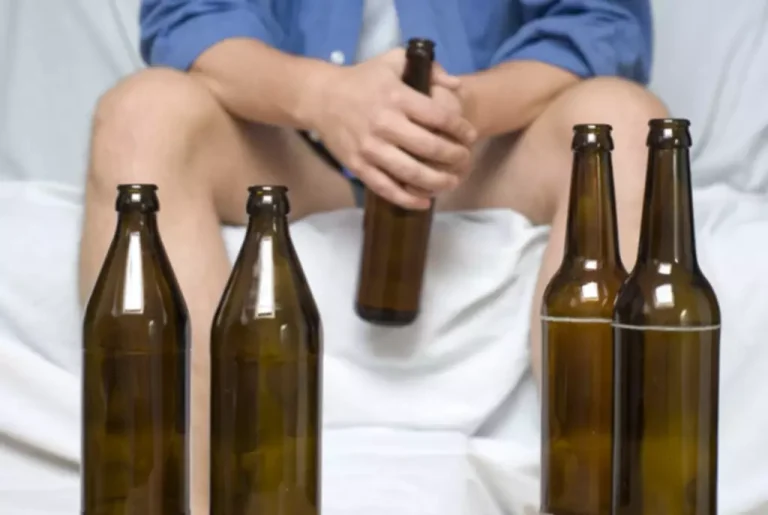
Oxford English Dictionary defines motivation as “the conscious or unconscious stimulus for action towards a desired goal provided by psychological or social factors; that which gives purpose or direction to behaviour. Motivation may relate to the relapse abstinence violation effect process in two distinct ways, the motivation for positive behaviour change and the motivation to engage in the problematic behaviour. This illustrates the issue of ambivalence experienced by many patients attempting to change an addictive behaviour.

Changes in brain activity in response to problem solving during the abstinence from online game play

We focus our review on two well-studied approaches that were initially conceptualized – and have been frequently discussed in the empirical literature – as client-centered alternatives to abstinence-based treatment. Of note, other SUD treatment approaches that could be adapted to target nonabstinence goals (e.g., contingency management, behavioral activation) are excluded from the current review due to lack of relevant empirical evidence. This paper presents a narrative review of the literature and a call for increased research attention on the development of empirically supported nonabstinence treatments for SUD to engage and treat more people with SUD. We define nonabstinence treatments as those without an explicit goal of abstinence from psychoactive substance use, including treatment aimed at achieving moderation, reductions in use, and/or reductions in substance-related harms. We first provide an overview of the development of abstinence and nonabstinence approaches within the historical context of SUD treatment in the U.S., followed by an evaluation of literature underlying the theoretical and empirical rationale for nonabstinence treatment approaches. Lastly, we review existing models of nonabstinence psychosocial treatment for SUD among adults, with a special focus on interventions for drug use, to identify gaps in the literature and directions for future research.
Motivational, emotional, and behavioral correlates of fear of missing out
Additionally, while early studies of SUD treatment used abstinence as the single measure of treatment effectiveness, by the late 1980s and early 1990s researchers were increasingly incorporating psychosocial, health, and quality of life measures (Miller, 1994). In the last several years increasing emphasis has been placed on “dual process” models of addiction, which hypothesize that distinct (but related) cognitive networks, each reflective of specific neural pathways, act to influence substance use behavior. According to these https://ecosoberhouse.com/ models, the relative balance between controlled (explicit) and automatic (implicit) cognitive networks is influential in guiding drug-related decision making [54,55]. Dual process accounts of addictive behaviors [56,57] are likely to be useful for generating hypotheses about dynamic relapse processes and explaining variance in relapse, including episodes of sudden divergence from abstinence to relapse. Implicit cognitive processes are also being examined as an intervention target, with some potentially promising results [62].

Social Media+ Society
- In the RP model, the client is encouraged to adopt the role of colleague and to become an objective observer of his or her own behavior.
- Other research reveals there may be some benefits to abstinence—some abstinence programs have been positively correlated with reduced teen pregnancy.
- This model both accelerated the spread of AA and NA and helped establish the abstinence-focused 12-Step program at the core of mainstream addiction treatment.
- The term “predictive validity” refers to the ability of a test or method to predict a certain outcome (e.g., relapse risk) accurately.
- For instance, in a high-risk context, a slight and momentary drop in self-efficacy could have a disproportionate impact on other relapse antecedents (negative affect, expectancies) [8].
Instead, the literature indicates that most people with SUD do not want or need – or are not ready for – what the current treatment system is offering. Despite findings like these, many studies of treatment mechanisms have failed to show that theoretical mediators account for salutary effects of CBT-based interventions. Also, many studies that have examined potential mediators of outcomes have not provided a rigorous test [129] of mechanisms of change. These results suggest that researchers should strive to consider alternative mechanisms, improve assessment methods and/or revise theories about how CBT-based interventions work [77,130]. Recently, Magill and Ray [41] conducted a meta-analysis of 53 controlled trials of CBT for substance use disorders.
- People who attribute the lapse to their own personal failure are likely to experience guilt and negative emotions that can, in turn, lead to increased drinking as a further attempt to avoid or escape the feelings of guilt or failure7.
- One of the most notable developments in the last decade has been the emergence and increasing application of Mindfulness-Based Relapse Prevention (MBRP) for addictive behaviours.
- It is important to note that these studies were not designed to evaluate specific components of the RP model, nor do these studies explicitly espouse the RP model.
- Second, the likelihood of abstinence following a behavioral or pharmacological intervention can be moderated by genetic influences on metabolic processes, receptor activity/expression, and/or incentive value specific to the addictive substance in question.

Given the abstinence focus of many SUD treatment centers, studies may need to recruit using community outreach, which can yield fewer participants compared to recruiting from treatment (Jaffee et al., 2009). However, this approach is consistent with the goal of increasing treatment utilization by reaching those who may not otherwise present to treatment. Alternatively, researchers who conduct trials in community-based treatment centers will need to obtain buy-in to test nonabstinence approaches, which may necessitate waiving facility policies regarding drug use during treatment – a significant hurdle. In sum, research suggests that achieving and sustaining moderate substance use after treatment is feasible for between one-quarter to one-half of individuals with AUD when defining moderation as nonhazardous drinking. While there is evidence that a subset of individuals who use drugs engage in low-frequency, non-dependent drug use, there is insufficient research on this population to determine the proportion for whom moderation is a feasible treatment goal. However, among individuals with severe SUD and high-risk drug or alcohol use, the urgency of reducing substance-related harms presents a compelling argument for engaging these individuals in harm reduction-oriented treatment and interventions.
- Recent reviews provide a convincing rationale for the putative role of implicit processes in addictive behaviors and relapse [54,56,57].
- For instance, a person recovering from alcohol use disorder who has a drink may feel a sense of confusion or a lack of control and they may make unhealthy attributions or rationalizations to try to define and understand what they’re doing.
- For example, the CBT intervention developed in Project MATCH [18] (described below) equated to RP with respect to the core sessions, but it also included elective sessions that are not typically a focus in RP (e.g., job-seeking skills, family involvement).
- An individual progresses through various stages of changes and the movement is influenced by several factors.
- These patterns can be actively identified and corrected, helping participants avoid lapses before they occur and continue their recovery from substance use disorder.
Responses of competitive athletes to lay-offs in training: Exercise addiction or psychological relief?
For example, overeaters may have an AVE when they express to themselves, “one slice of cheesecake is a lapse, so I may as well go all-out, and have the rest of the cheesecake.” That is, since they have violated the rule of abstinence, they “may as well” get the most out of the lapse. Treatment in this component involves describing the AVE, and working with the client to learn alternative coping skills for when a lapse occurs, such that a relapse is prevented. The AVE occurs when a client is in a high-risk situation and views the potential lapse as so severe, that he or she may as well relapse. The treatment is not lapse prevention; lapses are to be expected, planned for, and taken as opportunities for the client to demonstrate learning. Most often, relapse tends to be construed as a return to pretreatment levels of occurrence of the targeted behavior.
Reactivity to written mental arithmetic: Effects of exercise lay-off and habituation
The RP model developed by Marlatt [7,16] provides both a conceptual framework for understanding relapse and a set of treatment strategies designed to limit relapse likelihood and severity. Because detailed accounts of the model’s historical background and theoretical underpinnings have been published elsewhere (e.g., [16,22,23]), we limit the current discussion to a concise review of the model’s history, core concepts and clinical applications. The initial transgression of problem behaviour after a quit attempt is defined as a “lapse,” which could eventually lead to continued transgressions to a level that is similar to before quitting and is defined as a “relapse”. Another possible outcome of a lapse is that the client may manage to abstain and thus continue to go forward in the path of positive change, “prolapse”4. Many researchers define relapse as a process rather than as a discrete event and thus attempt to characterize the factors contributing to relapse3. The AVE describes the negative emotional response that often accompanies a failure to maintain abstinence from drugs or alcohol.
Effect of brief gaming abstinence on withdrawal in adolescent at-risk daily gamers: A randomized controlled study
Other research reveals there may be some benefits to abstinence—some abstinence programs have been positively correlated with reduced teen pregnancy. One study published in the Journal of Health Communication found the “Not Me, Not Now” campaign in Monroe County, New York, was strongly connected to a decline in teen pregnancy rates for that county. If you’re like me, you may have recently watched the Netflix show, Cheer, and thought, “I’ve got to start working out more…” But surely that isn’t the first time you’ve told yourself that. From New Year’s resolutions to the start of a new school year in September, we seem to be obsessed with clean, fresh starts where we can completely transform ourselves and our habits.
